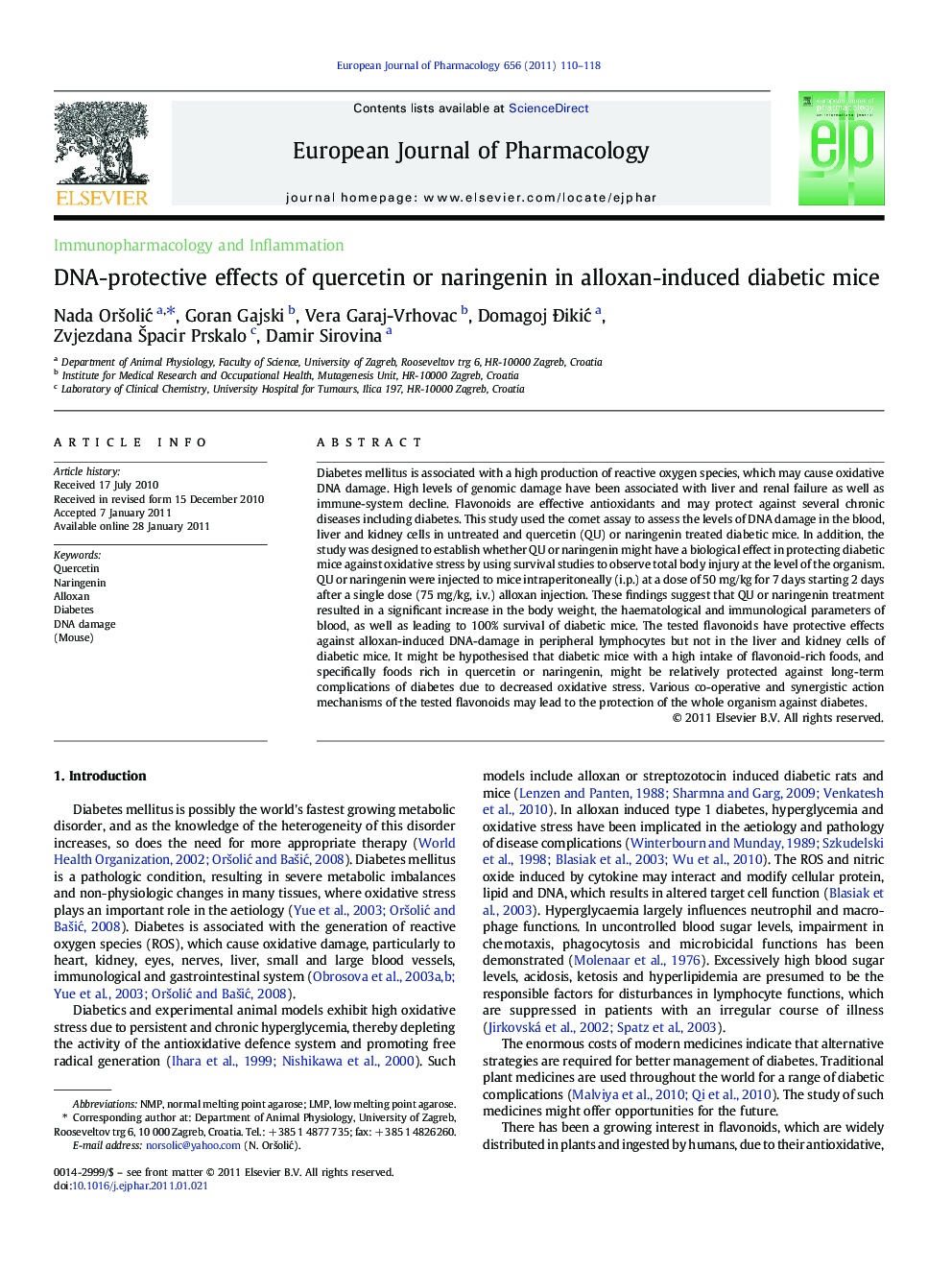| Article ID | Journal | Published Year | Pages | File Type |
|---|---|---|---|---|
| 5830393 | European Journal of Pharmacology | 2011 | 9 Pages |
Diabetes mellitus is associated with a high production of reactive oxygen species, which may cause oxidative DNA damage. High levels of genomic damage have been associated with liver and renal failure as well as immune-system decline. Flavonoids are effective antioxidants and may protect against several chronic diseases including diabetes. This study used the comet assay to assess the levels of DNA damage in the blood, liver and kidney cells in untreated and quercetin (QU) or naringenin treated diabetic mice. In addition, the study was designed to establish whether QU or naringenin might have a biological effect in protecting diabetic mice against oxidative stress by using survival studies to observe total body injury at the level of the organism. QU or naringenin were injected to mice intraperitoneally (i.p.) at a dose of 50Â mg/kg for 7Â days starting 2Â days after a single dose (75Â mg/kg, i.v.) alloxan injection. These findings suggest that QU or naringenin treatment resulted in a significant increase in the body weight, the haematological and immunological parameters of blood, as well as leading to 100% survival of diabetic mice. The tested flavonoids have protective effects against alloxan-induced DNA-damage in peripheral lymphocytes but not in the liver and kidney cells of diabetic mice. It might be hypothesised that diabetic mice with a high intake of flavonoid-rich foods, and specifically foods rich in quercetin or naringenin, might be relatively protected against long-term complications of diabetes due to decreased oxidative stress. Various co-operative and synergistic action mechanisms of the tested flavonoids may lead to the protection of the whole organism against diabetes.
Graphical abstractPercentage of apoptotic and necrotic cell deaths counted visually during the alkaline comet assay in mouse liver (A) and kidney (B) cells after alloxan treatment and joint treatment with alloxan and naringenin or quercetin.Download high-res image (147KB)Download full-size image
